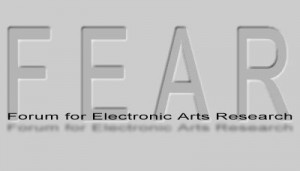The Biennale of Electronic Arts, Perth actively embraces the opening of new technological frontiers.
Biennale of Electronic Art Perth 2002 from Paul Thomas on Vimeo.
BEAP is an international event which includes a conference,symposiums, forum and exhibition presenting the theoretical, cultural and philosophical basis of Electronic Arts practice. The inaugural thematic focus for BEAP is LOCUS, the place where we believe consciousness exists. The idea of place is being renegotiated through the developing biological relationships, effecting consciousness. These effects are further confronted through the external input of computer generated and augmented virtual realities. We find ourselves as the centre of this point of convergence, our senses become the portals, our skin becomes the screen between these immersive realties. This portal, this relocated screen, should now be at the forefront of minds, when the skin no longer defines the boundaries of our sense of self.

The Biennale examines these explosions of activities at the intersection of art, science, and technology, by practitioners in the field of developing electronic technologies from Australia and around the world. It will focus on the ongoing need for dialogue and contextualisation to represent the current states in which we will find ourselves.
BEAP shares an interest in the possibilities of using exhibitions and discussion to explore aspects of practice as well as developing networks to critically evaluate work. From Perth the concept of Locus is placed in the wider context of international forums, communicating with other groups and individuals in Australia and overseas.
The John Curtin Gallery and the Studio for Electronic Arts in the School of Art at Curtin University of Technology have sought expressions of interest from artists working either individually or in partnership with scientists to instigate an international electronic arts exhibition. This exhibition will feature cutting edge work from international, national and regional contemporary arts practitioners. The exhibited works will explore the boundaries of new technologies and present them to the public in a challenging and thought provoking way.

There has been a significant attitude shift in recent years with artists and scientists reaching out beyond their own domains and this comes at a time when global economics, fuelled by new developments in science and digital technology, is providing increasing opportunities for artistic and technological interactivity. Artists have always been among the first to apply technological advances to their work, and using electronic and digital technologies for seeing and expressing ideas is becoming commonplace in the scientific arena. This mutual interest in shared electronic and digital tools is fostering a common language between artists and scientists, and the Internet and email enable artists and scientist’s new access to one another. Given all these factors there is now an exciting opportunity for developing collaborative partnerships for informing and inspiring society with the artist and scientist working together in the field of electronic arts.
Director Paul Thomas
http://mass.nomad.net.au/wp-content/uploads/beap/200




